Is your Sanseveria not looking as healthy as it should be? These Signs Of A Dying Snake Plant might be the hidden culprits!
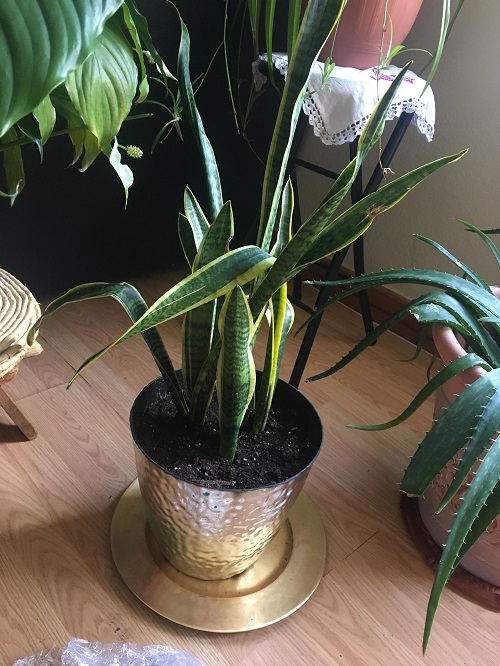
While snake plants are pretty hardy, they definitely do not survive extended ignorance and might eventually give up! So before it does, look for these prominent Signs Of A Dying Snake Plant and learn how to revive it!
Here Are The Best Ways To Style Your Home With Snake Plants
Signs Of A Dying Snake Plant
1. White Spots On Soil

You might have ignored these spots as hard water deposits, but there’s more to it. They could be the subtle signs of pest or fungal infections. Molds and powdery mildew often manifest as white, powdery patches, which are a common issue in highly humid or damp conditions.
Do not ignore these spots, as they are indicative of poor air circulation in the medium, lending path for various other pests, such as soil mites or fungus gnats. These tiny creatures also appear as small white spots or create web-like structures in the soil, further stressing your plant.
How To Treat?
If these white spots are way too prominent and coupled with stunted growth or dry leaves, it’s better to refresh the medium entirely. However, if the spots are less noticeable, cut back on watering and treat the medium with a fungicide. Also, keep aerating the medium every 3-5 weeks to ensure proper air circulation in the medium.
2. Leaning Posture

While this might not seem alarming, it is a clear sign of poor plant health. When a plant doesn’t receive adequate light, it may start leaning toward the nearest light source, indicating the need for better light exposure.
Infact, uneven watering can also cause root imbalances, leading to instability. Another possible factor could be an overgrown plant that might lead the pot to wobble. In any case, a prolonged period of such a condition is unhealthy and monitoring. bent leaves or floppy leaves transplant shock
How To Treat?
To fix and prevent this leaning, place your snake plant in a spot with consistent, indirect light. Rotate the plant every couple of weeks to ensure even sun exposure on all sides. Repotting it in a container that’s the right size helps, too. And don’t forget about the watering—let the soil dry out between waterings to keep the roots strong and healthy.
3. Holes in Leaves
Holes on the leaves of a snake plant are often a tell-tale sign of pest infestation. Common culprits include snails and slugs, which feed on the fleshy leaves, leaving behind irregular holes. However, these are more common in outdoor spots.
If the punctures are small and coupled with dry edges, spider mites, and caterpillars must be munching on your plant.
How To Treat?
Inspect regularly for signs of infestation, such as visible bugs, webbing, or eggs on the undersides of leaves. Treat early with insecticidal soap or neem oil, and maintain a clean, debris-free environment to prevent future attacks. Here’s a detailed discussion on dealing with holes in snake plants.
4. Bad Soil Odour

A bad odor emanating from the soil of a snake plant is typically a sign of root rot or bacterial growth, both of which are often caused by excessive moisture. When the soil remains too wet for extended periods, it deprives the environment of oxygen, allowing bacteria and fungi to thrive. These pathogens attack the roots, leading to decay.
How To Treat?
To save your plant, take it out of the pot, cut off the decayed roots, and replant it in fresh, well-draining soil. You can improve the drainage by adding gravel at the pot’s base. Avoid following a set routine for watering plants; instead, check the top layer and water only when it feels dry to the touch.
5. Pale Coloration
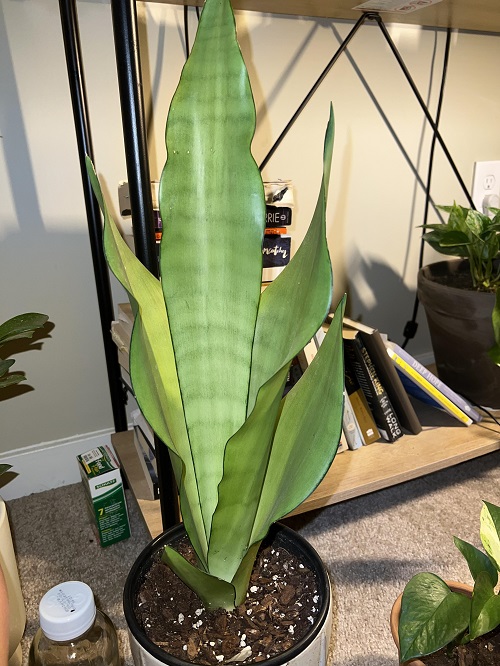
Pale or discolored leaves often hint at improper lighting or nutrient deficiencies. Though sansevierias are famous for their adaptability to low light, placing them in absolute shade can fade their variegation. Also, remember to hit a balance in sunlight, as too much exposure can also affect the variegation complemented by brown edges.
Additionally, a lack of essential nutrients, like nitrogen, often causes leaves to lose their color.
How To Treat?
If the plant is already placed in a sunny place, then the reason is obvious—overexposure to sun. In that case, move it to a shadier spot. Conversely, if it has been sitting in the shade for a long, move it to a slightly brighter location with indirect sunlight. Also, feed it with a diluted balanced liquid fertilizer every 4-6 weeks in the growing seasons to fulfill its nutritional needs.
6. Mushy Roots
Mushy roots in your snake plant are a big red flag, usually pointing to root rot. This problem often comes from overwatering, creating a soggy home where harmful fungi and bacteria can attack the roots.
Another factor sometimes missed is using soil that holds too much moisture, which worsens the problem by stopping proper drainage. Also, pots without enough drainage holes can keep water around the roots, leading to an environment where rot thrives.
How To Treat?
Act quickly by removing the plant from its pot, cutting away any mushy, discolored roots, and repotting in fresh, well-draining soil. Always pick pots with ample drainage holes.
7. Shriveled or Wrinkled Leaves
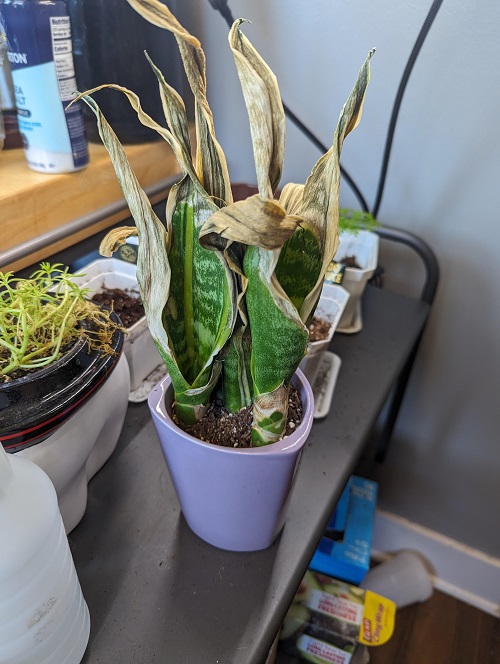
Shriveling, or excessive dryness in snake plants, usually occurs due to underwatering. This hardy plant stores water in its leaves, and when deprived, the leaves begin to consume their stored water, leading to a wrinkled texture.
How To Treat?
To address this, water the plant thoroughly, draining out the excess. Ensure that the soil is dry an inch below the surface before watering again. Snake plants require less water in cooler months, so adjust your watering schedule seasonally.
8. Brown or Mushy Leaves
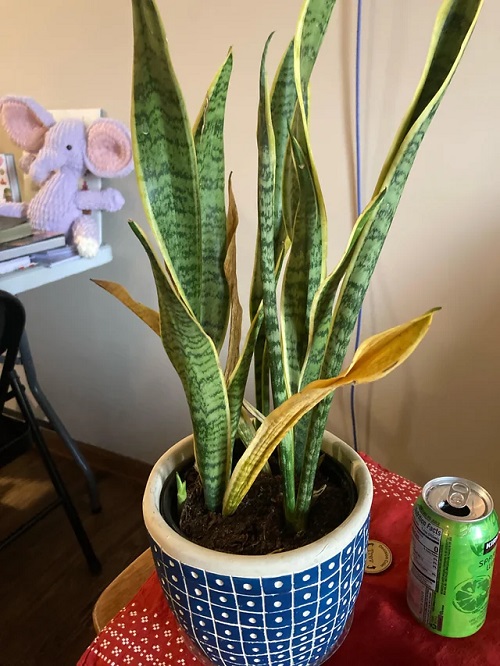
Loss of firmness in snake plant leaves, accompanied by brown, mushy patches, is a classic symptom of overwatering and resultant root rot. However, if the soil is seemingly dry, then it could also be a sign of too much sun exposure.
Plus, environmental changes, like rapid temperature fluctuations, can also cause the leaves to turn brown, particularly if the plant is near drafty windows or air vents.
Other culprits are low humidity in dry or heated rooms can lead to brown leaves. Excessive fertilizer also results in brown tips or edges.
How To Treat?
Stick to a consistent watering schedule and let the soil dry out between waterings. Avoid placing your plant in spots where the temperature changes a lot. Boosting humidity with methods like pebble trays or humidifiers can also help.
9. Crowned Appearance
A crowded or crowned appearance in snake plants is generally a signal of either root-bound conditions or insufficient light. In a root-bound scenario, the plant’s roots must have filled the pot, hindering further growth. If the issue is inadequate light, the plant produces extra leaves in an effort to capture more light.
How to Treat?
Relocate the plant to an area with bright, indirect sunlight. Also, rotate the plant in regular intervals to ensure even growth and prevent crowding on one side. If you notice the roots coming out of the surface, consider repotting it to a one-size bigger container. In fact, dividing it is an even smarter option. Here’s how you can do it!
10. Wilting and Drooping
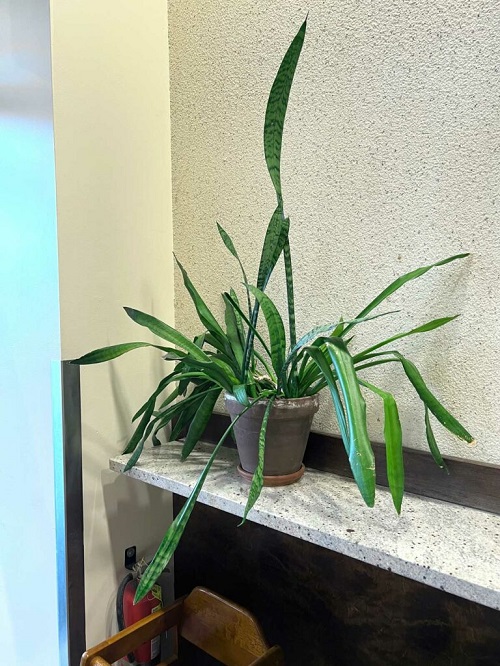
If your snake plant suddenly starts showing wilted or floppy leaves, you have probably shifted it to a new location. Also, sudden transplantation shocks a plant, leading to floppy foliage.
Plus, overwatering often leads to waterlogged soil and deprived roots, resulting in droopy leaves. Underwatering, though less common in this drought-tolerant plant, can also cause wilting when the plant’s water reserves are depleted.
How To Treat?
To turn things around, keep it away from drafty locations and let it settle down for a few days after repotting. Also, keep an eye on the top inch of the medium and water when it feels dry to the touch, letting it drain out from the bottom holes of the pot.






